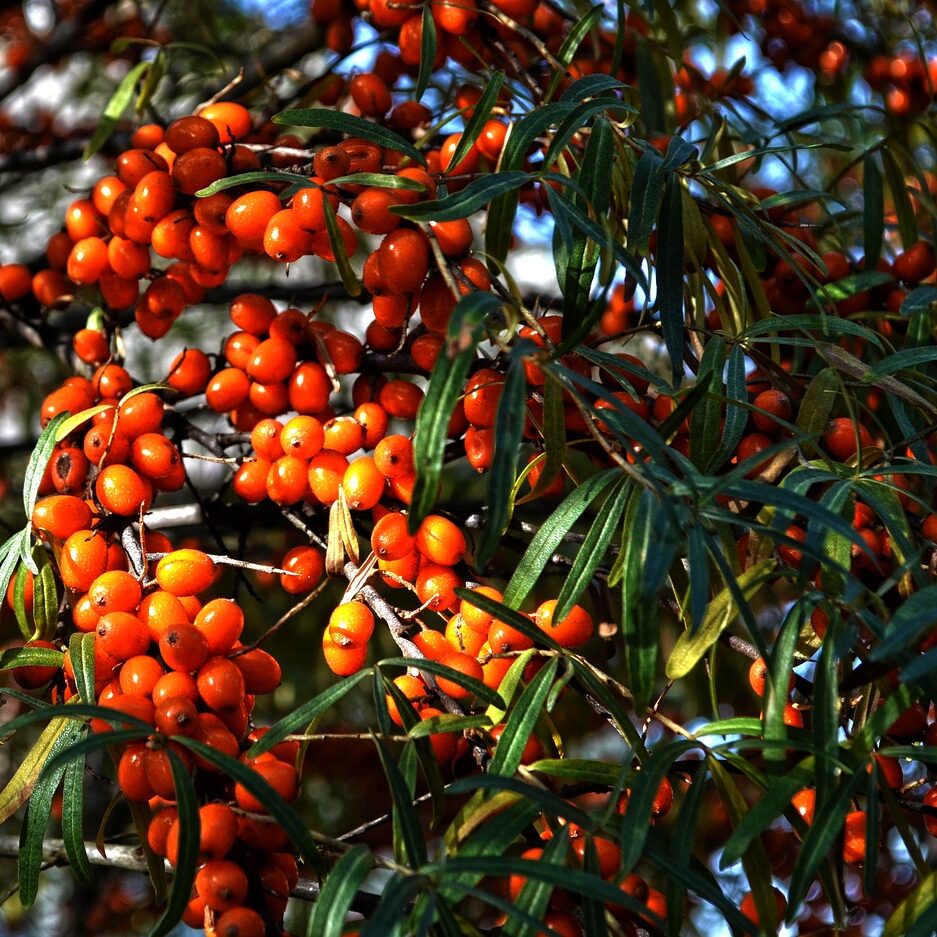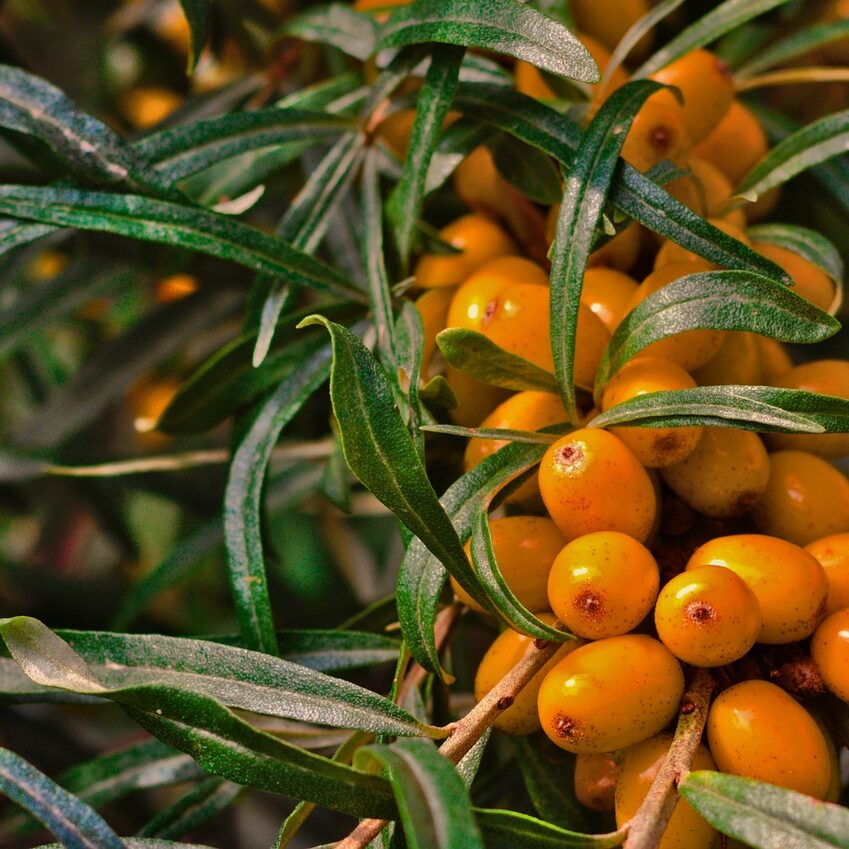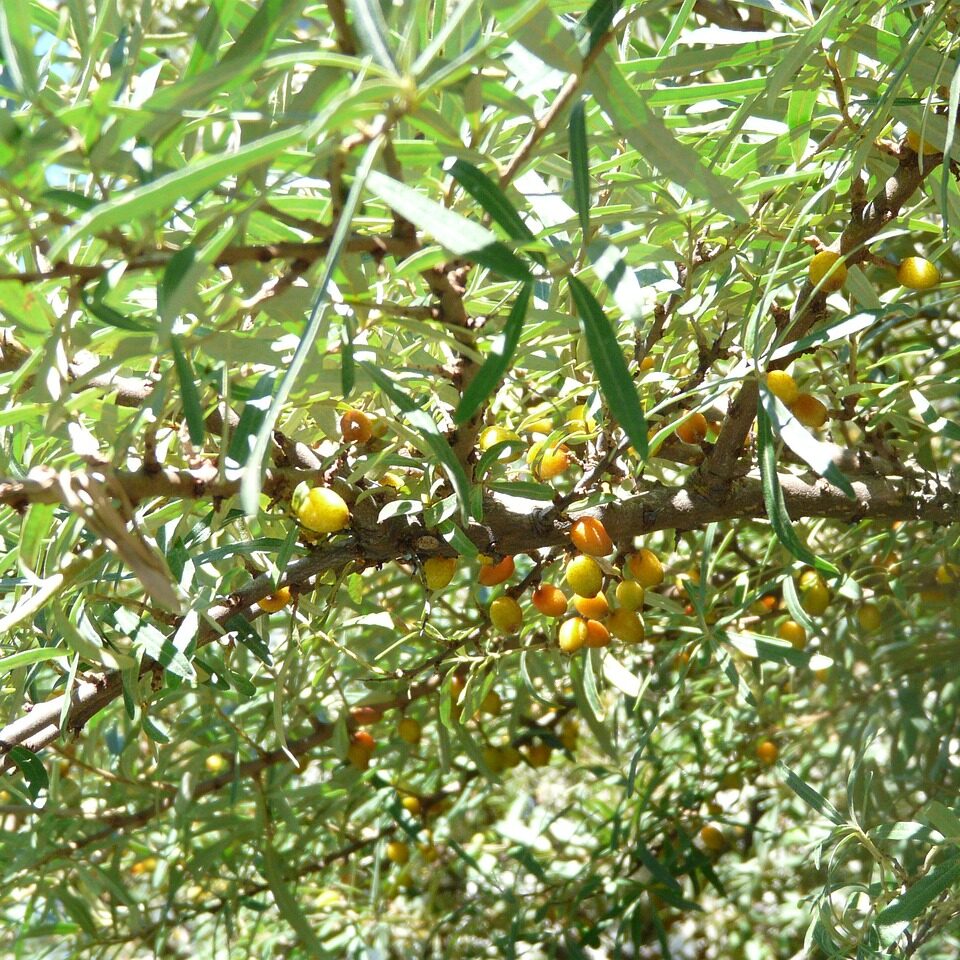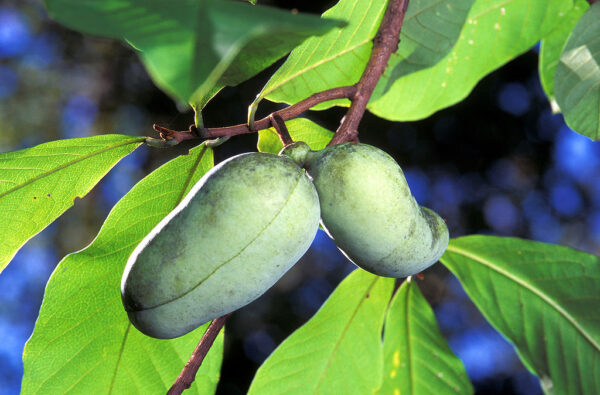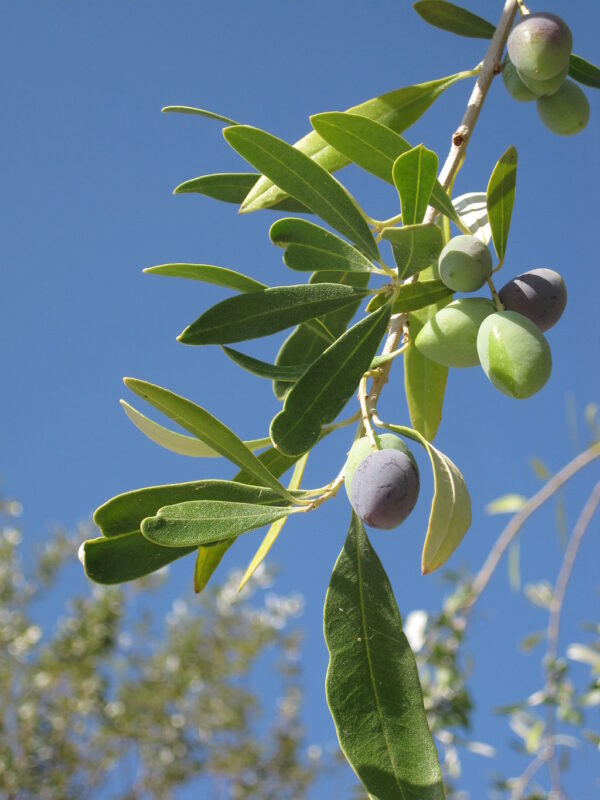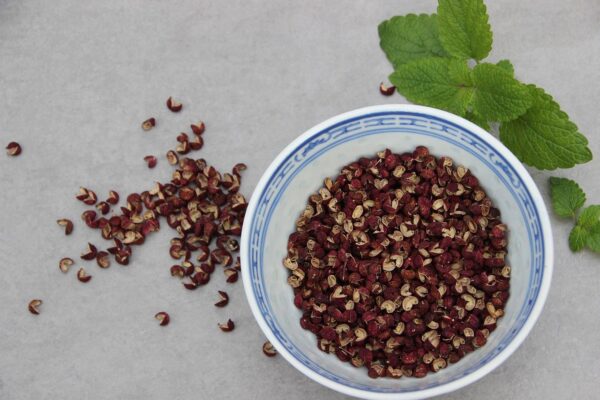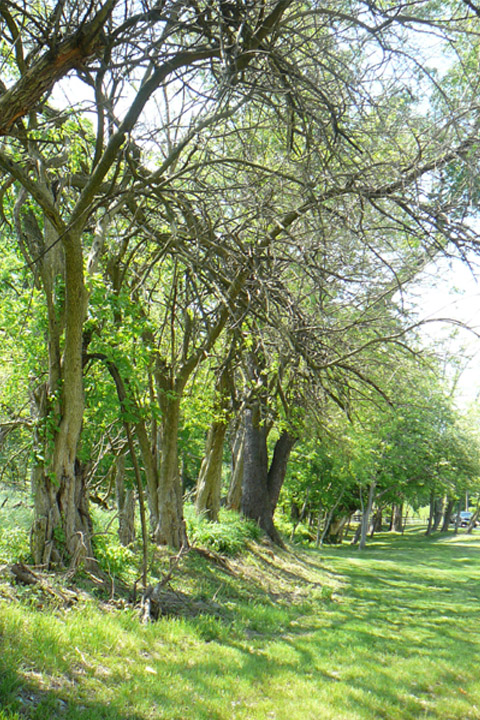Your cart is currently empty!
Hippophae rhamnoides – Sea Buckthorn seeds
Description
Caution: Sea buckthorn is a hardy, salt-tolerant shrub with a reputation for escaping cultivation near sandy, free-draining soils — particularly in coastal areas. It can establish aggressively in dune systems, displacing native vegetation. Please do not plant this species if you live near the beach or on sandy soils with access to natural areas. It is best suited to inland sites where its growth can be monitored and controlled.
Hippophae rhamnoides is a deciduous, nitrogen-fixing shrub or small tree grown for its vivid orange fruit, which are exceptionally rich in vitamin C, carotenoids, and antioxidants. The berries are very sour but highly nutritious, often used in juices, syrups, jams, and cosmetics. Fruit forms along branches in dense clusters and can be harvested once softened by frost.
Plants are dioecious, meaning male and female flowers occur on separate individuals. To ensure pollination and fruit set, plant at least six to ten seedlings to allow for a mix of sexes and good genetic diversity.
Sea buckthorn reaches 2–6 metres in height, forming a thicket over time via suckering. It tolerates wind, drought, salinity, and nutrient-poor soils. Best in full sun. Cold-hardy to below –40°C and well suited to harsh inland sites where few other fruiting shrubs will thrive. Spines on branches make harvesting challenging but also provide excellent shelter or hedge potential in the right setting.
Germination and Cold Stratification:
Seeds benefit from 6–8 weeks of cold, moist stratification at 1–5°C. After chilling, sow into a warm (18–22°C) environment; germination typically occurs within 2–3 weeks.
Outdoor Stratification Tip:
In cooler parts of New Zealand, sea buckthorn seeds can be sown in autumn in trays or pots and left in a rodent-proof location outdoors. Winter chill will naturally break dormancy, and seedlings will emerge in spring.
